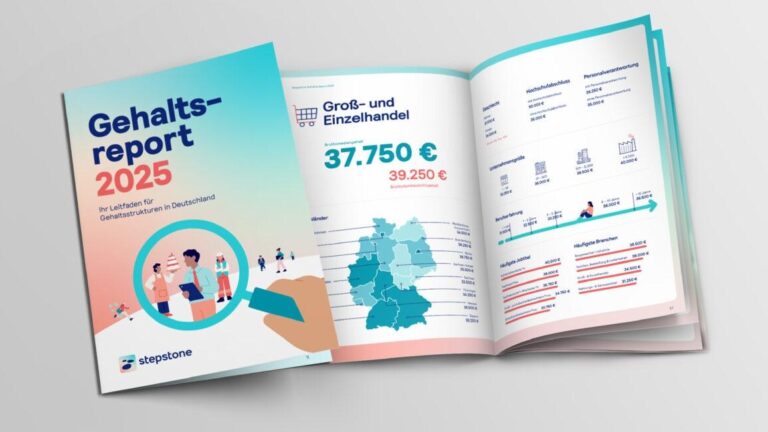The National Education Association (NEA) has released its highly anticipated Educator Pay Data for 2025, shedding new light on salary trends and compensation disparities across the United States. As debates around teacher pay and education funding continue to dominate public discourse, this comprehensive report offers critical insights into how educators’ earnings have evolved amid ongoing economic and policy challenges. Stakeholders from policymakers to school districts will find the data essential for informed decision-making as the nation strives to attract and retain qualified teaching professionals in the years ahead.
Educator Pay Trends Reveal Persistent Wage Disparities Across States
Despite increased public attention and policy efforts, the latest data highlights that educator compensation remains unevenly distributed across the United States, reflecting deep-rooted economic and political factors affecting regional education systems. States in the Northeast and West Coast typically report salaries that are significantly higher than those in the South and parts of the Midwest, underscoring stark economic divides that challenge workforce stability and recruitment efforts. Notably, cost of living adjustments fail to fully bridge this wage gap, leaving many educators in lower-paying states facing financial stress despite their critical roles.
The patterns also reveal disparities based on district funding priorities, union strength, and state education budgets. Key highlights include:
- Top-paying states often include New York, California, and Massachusetts, where average salaries exceed $75,000.
- Lower-paying states, such as Mississippi, Oklahoma, and West Virginia, average closer to $45,000, limiting career sustainability.
- Wage stagnation in several regions contrasts with modest increases elsewhere, pointing to inconsistent policy implementation at local levels.
| State | Average Educator Salary (2025) | Year-over-Year Change |
|---|---|---|
| California | $82,300 | +3.2% |
| Texas | $60,500 | +1.1% |
| Florida | $54,700 | +0.7% |
| Mississippi | $45,200 | +0.0% |
| Massachusetts | $78,900 | +2.8% |
Analyzing the Impact of Compensation on Teacher Retention and Student Outcomes
The correlation between educator compensation and teacher retention continues to capture the attention of policymakers and school administrators nationwide. Studies indicate that competitive salaries are a decisive factor in reducing turnover rates, particularly in underserved and high-poverty districts. Teachers who receive equitable compensation are more likely to remain in their roles longer, thereby fostering stability in classrooms and allowing for the development of deeper student-teacher relationships. This enhanced retention supports a more experienced teaching workforce, which research shows is critical to improving educational quality and student achievement over time.
Beyond retention, the ripple effects of compensation on student outcomes are significant. Schools that invest in fair pay often report higher student performance metrics, including test scores and graduation rates. The data below illustrates recent findings from selected districts that implemented salary increases between 2020 and 2024:
| District | Average Teacher Salary Increase | Retention Rate Improvement | Student Performance Gains (2020-24) |
|---|---|---|---|
| Riverbend | 12% | 8% | 6% Increase in Math Scores |
| Maplewood | 15% | 10% | 7% Increase in Reading Proficiency |
| Lakeside | 10% | 7% | 5% Higher Graduation Rate |
- Retention strategies tied to compensation boost institutional knowledge.
- Higher salaries contribute to improved morale and instructional quality.
- Student academic progress shows measurable gains in districts with targeted pay increases.
Policy Recommendations to Address Wage Gaps and Support Educator Recruitment
Targeted salary adjustments must be implemented to close persistent wage gaps affecting educators, particularly those in underfunded districts or serving marginalized communities. To ensure equitable pay, policymakers should prioritize:
- Expanded salary scales that reflect regional cost-of-living differences.
- Incentive pay for high-need subject areas and difficult working conditions.
- Annual transparency reports outlining compensation disparities by race, gender, and district.
Supporting educator recruitment goes beyond salary increases. States and school districts must also invest in comprehensive strategies including:
- Robust mentorship programs for new teachers to reduce early career attrition.
- Flexible pathways to certification to attract diverse candidates and career changers.
- Competitive benefits packages encompassing mental health support and professional development funds.
| Policy Area | Key Action | Expected Outcome |
|---|---|---|
| Salary Equity | Implement localized pay scales | Reduced wage disparities |
| Recruitment | Expand alternative certification | Diverse candidate pool growth |
| Retention | Mentorship & support services | Lower turnover rates |
NEA Calls for Increased Funding and Transparent Reporting in Education Budgets
The National Education Association (NEA) has emphasized the urgent need for increased funding in schools nationwide to address persistent challenges impacting educator compensation and classroom resources. Highlighting disparities across districts, the association argues that current budget allocations fall short of what is necessary to attract and retain quality educators. Additionally, the NEA stresses that increased transparency in how education funds are spent is essential to ensure taxpayers and stakeholders can hold school systems accountable.
To support its call, the NEA proposes a set of mandatory reporting standards that would provide clear, accessible data on budget distribution at both state and local levels. These standards aim to illuminate how much is actually directed towards educator salaries, professional development, and student support services versus administrative expenses. Below is a snapshot of proposed budget categories NEA considers crucial for transparent reporting:
| Budget Category | Recommended Funding Focus |
|---|---|
| Educator Salaries | Competitive pay based on region and experience |
| Professional Development | Ongoing training and career advancement |
| Student Support | Counseling, special education, and enrichment programs |
| Administrative Costs | Efficiency improvements and accountability mechanisms |
- Increased funding to combat teacher shortages and improve classroom conditions
- Mandatory financial transparency to highlight spending priorities
- Data-driven policy-making ensuring equitable resource allocation
To Wrap It Up
As the 2025 educator pay data is released by the National Education Association, the figures underscore persistent challenges and highlight critical disparities across states and districts. This comprehensive snapshot not only informs policymakers and stakeholders but also fuels ongoing debates about funding priorities and the value placed on teaching professionals nationwide. Moving forward, the data serves as a crucial benchmark for efforts aimed at improving compensation and retaining quality educators, ensuring that investments in education translate into stronger outcomes for students across the country.




